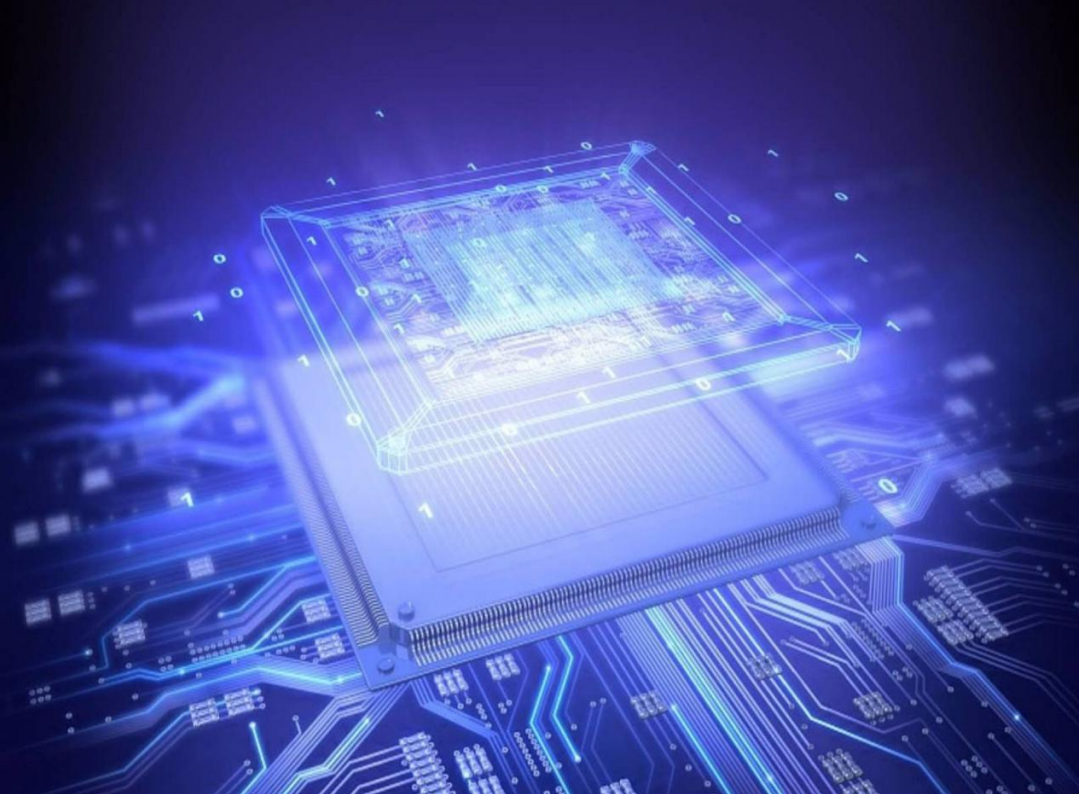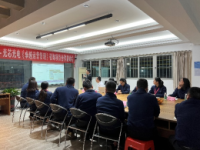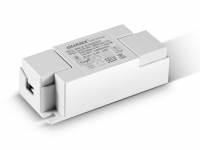News Center
Knowledge sharing | Types of optical credit chips
2021-12-11
Optical fiber communication system is a communication mode that uses light as the carrier of information and optical fiber as the transmission medium. It first needs to carry out photoelectric conversion at the transmitting end, convert various electrical signals into optical signals, and then transmit them to the receiving end through optical fiber, and convert the optical signals into electrical signals at the receiving end. In this process, the generation and processing of all optical signals, as well as the processing of related electrical signals, are inseparable from semiconductor chips. Among them, the chips related to photoelectric conversion are mainly III-VI chips, and recently there are chips based on silicon materials. And the electrical signal processing is mainly germanium silicon material technology, and some are CMOS technology. In addition, there are some optical signal processing chips in the field of optical communication, such as optical branching, optical crossing and connection. The integration technology integrating optical and electrical processing functions is the latest development direction in the field of optoelectronic chips, especially silicon optical chips.
The optical chip of Optical Communication Credit undertakes photoelectric conversion or optical signal processing. Specifically, it includes various laser chips, various detector chips and other optical signal processing chips at the transmitter.

1 Luminous chip
According to the structure, lasers can be divided into FP lasers, DFB lasers, VCSEL lasers, etc. Fabry-Perot FP cavity is the most common resonator structure. The semiconductor laser made on this basis is therefore the simplest, the process is relatively simple, and the cost is relatively low. A DFB laser can be formed by adding a distributed feedback Bragg grating DFB structure to the structure of the FP laser. Because the manufacturing process needs to add a MOCVD process, it is more complex, but the spectral characteristics are far better than the FP laser, supporting a longer transmission distance. Unlike the side emitting structure of FP and DFB lasers, VCSEL vertical cavity surface emitting lasers use special structure to make light emitted from the front, which is easy to realize coupling, but the power and wavelength are limited to some extent. In addition, by reducing the thickness of the active layer of the laser to the Bohr radius or the de Broglie wavelength (usually 10 nm to 50 nm), the semiconductor laser will exhibit quantum size effect, and the carrier is limited in the potential well formed by the active layer. Such a laser is called a quantum well laser. Quantum well lasers usually have lower threshold current, better temperature characteristics, narrower linewidth, higher quantum efficiency, higher modulation characteristics and better polarization characteristics. Quantum well lasers are generally divided into two types: quantum dots and quantum wires.
According to the application situation, lasers can be divided into laser for optical module and pump laser for optical amplifier. The pump laser is a high-power laser with special wavelength, which is used to provide energy in the fiber amplifier, generally 1480nm or 980nm.
According to the wavelength characteristics, lasers can be divided into fixed wavelength lasers, tunable wavelength lasers, narrowband lasers, etc. Compared with the fixed wavelength laser, which can only output one wavelength, the tunable wavelength laser can achieve continuous wavelength output within a certain spectral range, which has special application value in wavelength division multiplexing and other fields. Narrow-band lasers further limit the spectral range compared with ordinary lasers, which can play a role in special fields such as coherent communication, optical fiber sensing, spectral analysis and so on.
In addition, lasers can also be distinguished according to material, wavelength, power, temperature range and operating rate. Semiconductor lasers are generally made of three or five groups of InP or GaAs materials, doped with phosphorous, aluminum and other materials as required. Different materials correspond to different wavelengths. Optical communication mainly includes three communication windows: 850 nm, 1310 nm and 1550 nm. Due to the development of wavelength division multiplexing, the types of optical communication wavelengths are increasing.
Generally, the laser for communication does not need particularly large power, but the pump laser is an exception. According to the working conditions, lasers are applicable to indoor, outdoor and military industries respectively, and different temperatures are selected according to the needs. Finally, the operating rate is a very important parameter of semiconductor lasers. At present, the maximum direct modulation rate of laser does not exceed 35GHz. The working rate of the laser is directly related to the material, structure and technology.
In 1977, the research team led by Professor Kenichi Iga of Tokyo University of Technology in Japan first proposed the concept of vertical cavity surface emitting laser VCSEL. Its optical resonator is perpendicular to the substrate of semiconductor chip, which can realize laser emission on the chip surface. It has many advantages in production, testing and application. Specifically, the small divergence angle of VCSEL laser and the circularly symmetric far and near field distribution greatly improve its coupling efficiency with fiber, without the need for complex and expensive beam shaping system. It has been confirmed that the coupling efficiency with multimode fiber can be more than 90%; The length of the optical cavity is very short, resulting in the widening of its longitudinal mode spacing, which can realize single longitudinal mode operation in a wide temperature range, and the dynamic modulation frequency is high; The reduction of cavity volume makes its spontaneous emission factor several orders of magnitude higher than that of ordinary end-emitting lasers, which leads to many physical characteristics being greatly improved; It can be tested on chip, greatly reducing the development cost; Vertical substrate in the direction of light output can easily realize the integration of high-density two-dimensional plane array and achieve higher power output, and because multiple lasers can be arranged in parallel in the direction perpendicular to the substrate, it is very suitable for application in parallel optical transmission and parallel optical interconnection and other fields. It has been successfully applied to single-channel and parallel optical interconnection at an unprecedented speed. With its high cost performance, it is widely used in broadband Ethernet It is widely used in high-speed data communication network; The most attractive thing is that its manufacturing process is compatible with light-emitting diodes (LEDs), and the cost of large-scale manufacturing is very low. VCSEL laser was first used in short-range data interconnection, data center internal connection and other applications. However, with Apple's adoption of VCSEL scheme in its iPhone to realize 3D sensing, the VCSEL market that has been silent for many years suddenly burst out. Although VCSEL has various advantages, because of its extremely short gain region length (less than 1 micron), the lasing conditions are very harsh and difficult to achieve. Until 1988, scientists from the United States, Japan and other countries successively announced the 0.86 micron GaAs/GaAlAs VCSEL laser to achieve continuous operation at room temperature.
2 Other types of optical chips
The detector chip is not as complex as the laser chip, but it can also be distinguished according to wavelength, material, speed and temperature range. According to the different structures, the detectors are divided into the most common PD and the avalanche photodiode APD with a certain amplification effect.
Laser and detector chips are chips that complete photoelectric conversion. In addition, there are some chips for signal processing purely in the optical domain. The most commonly used ones are PLC planar optical waveguide chips, including simple splitter chips and more complex AWG array waveguide grating chips. These chips can be divided and combined according to power or wavelength. MEMS chip is another kind of passive optical chip, which can be used for power attenuation, optical switch and other applications. In terms of active applications, optical chips also include semiconductor optical amplifier chips that are not yet mature.
3 Electronic chip of Optical Communication
The electric chip in the optical communication system is used to cooperate with the optical chip, or to improve the efficiency of the optical chip. These chips include the laser driver chip LDD, the modulator driver chip, the pre-impedance amplifier TIA behind the detector, the main amplifier chip LA, and the PAM4 chip, CDR, SerDes or DSP chips that have emerged in recent years to improve the laser spectral efficiency. In addition, it also includes other electrical chips in the optical communication system, such as MCU chips, control chips of semiconductor cooler TEC, etc. Most optical communication power chips belong to analog integrated circuits. The main requirements for electric chips are low power consumption, small size and wide temperature range.
In order to realize the inversion of the semiconductor laser from low energy level to high energy level and realize the stimulated radiation, it is necessary to provide appropriate driving current for the operation of the semiconductor laser. The driving current must not only be higher than a threshold (threshold), but also have requirements for the stability of the current itself. In addition, the modulated signal of the laser is also added to this current. Power current curve (P-I curve) is one of the most important characteristics of semiconductor lasers. It is the laser driver circuit that provides the appropriate current to the laser. When an external modulator is needed, the external modulator also needs a drive circuit. The drive circuit of the early optical communication system was composed of discrete devices, but it has been generally completed by integrated circuits since the 1990s. In addition to providing drive current, these drive chips generally provide some control functions for laser performance. Laser driver chips can be distinguished according to the working rate of lasers. Laser driver chips below 10Gbps can usually achieve multi-rate support at the same time. 25Gbps driver chips are the current hot products. According to different applications, laser driver chips also have a special class of driver chips for PON passive optical networks, mainly to complete power control in burst mode. In addition, VCSEL lasers usually have their own driver chips.
The semiconductor photodiode is a device that generates light and current, with light signal input and current signal output. In order to convert the output current signal into a signal that can be used by the subsequent digital communication system, two-stage amplification is generally required. The trans-impedance amplifier TIA completes the first stage and realizes the conversion from current signal to voltage signal, so it is called trans-impedance amplifier. The second stage of amplification further amplifies the voltage signal output by TIA to the voltage required by subsequent circuits. Like the driver chip, the TIA and the main amplifier chip can also be distinguished according to the speed, and there are also special types of burst mode. In recent years, many chip manufacturers usually combine the laser driver and the main amplifier chip, while the TIA chip is generally used in the optical receiver module ROSA.
The aforementioned laser driver chip adopts direct modulation based on NRZ (non return to zero) signal. In recent years, in order to improve the transmission capacity of optical communication systems, new spectrum modulation technology has been widely introduced. The most basic spectrum modulation is PAM (Pulse Amplitude Modulation). PAM4 is a kind of PAM modulation technology, that is, fourth-order pulse amplitude modulation. NRZ signal uses high and low signal levels to represent 1 and 0 of digital logic signal. Each clock cycle can transmit 1 bit of logic information. PAM4 signal adopts four different signal levels for signal transmission. Each clock cycle can transmit 2 bits of logic information, namely 00, 01, 10, 11. Therefore, under the same baud rate, the bit rate of PAM4 signal is twice that of NRZ signal, the transmission efficiency is doubled, and the cost can also be effectively reduced. PAM4 technology has been widely used in the field of high-speed signal interconnection. At present, there are 400G optical transceiver modules based on PAM4 modulation technology for data centers and 50G optical transceiver modules based on PAM4 modulation technology for 5G interconnection networks. PAM4 modulation cannot be realized without PAM4 driver chip.
SERDES is the abbreviation of SERializer and DESerializer, namely serial transceiver. As the name implies, it consists of two parts: the sender is the serial transmission unit SERializer, which uses high-speed clock to modulate and encode the data stream; The terminal is the serial receiving unit DESerializer, whose main function is to recover the clock signal from the data stream and demodulate and restore the data. According to its function, the receiving unit also has a name called CDR (Clock and Data Recovery) or CRU (Clock Recovery Unit). Taking a serial transmission and deserialization receiver with 10 data lines as an example, 10 100MHZ signal lines are fed into the SERDES device to generate a serial code stream, and the clock is also modulated into the code stream, which in turn restores the parallel data and clock. The application of SERDES technology has well solved the bottleneck of high-speed system data transmission (especially the backplane transmission application), saved the area of the single board, improved the stability of the system, and is a strong support for high-speed system design. SERDES is a very complex high-speed digital-analog hybrid circuit, and is a necessary chip for modern optical fiber communication systems. On this basis, a digital signal processing chip DSP dedicated to high-speed coherent systems has been further developed. At present, such chips can only be imported from abroad.
4 Optical integrated chip
Unlike electronic devices, which have already realized the integration of more than one billion single chips, optical chips currently have the highest integration level of only a hundred, but this technology has developed rapidly and is also the most popular field of optical communication devices, especially optoelectronic hybrid integrated devices. At present, such integrated devices mainly include silica-based PLC circuits, InP-based and silicon-based CMOS processes. They are mainly developed for applications such as high-speed coherent communication. Due to possible low cost, high integration and compatibility with electronic chips, silicon-based optoelectronic integration is currently the most promising integrated optoelectronic technology.
Hot news

2021-12-25
Guangdong Guangxin Photoelectric Technology Co., Ltd Ending of excellent operation management projectGuangdong Guangxin Photoelectric Technology Co., Ltd In order to improve the management level of the company, better meet and serve customers, and speed up the response to customers, the company has carried out the excellent operation management project w

2021-12-15
Guangdong Guangxin Photoelectric Technology Co., Ltd Go to Jiangsu to serve customers in the East China market with LED drive power supplyGuangdong Guangxin Photoelectric Technology Co., Ltd Production and sales of LED light drive power supply (LED drive power supply), with rich product lines, mainly based in Guangdong for many years; However, there are many LED lamp manufacturers in Jiang

2021-12-11
FAQ of LED drive power supplyThe LED driver we mentioned includes digital driver and analog driver. Digital driver refers to digital circuit driver, including digital dimming control, RGB full-color change, etc. Analogue drive refers to analog circuit drive, including AC constant cur



Copyright © Guangdong Guanx Photoelectric Technology Co., Ltd All Rights Reserved 粤ICP备2021156941号-1
Website Construction:LEEKIND